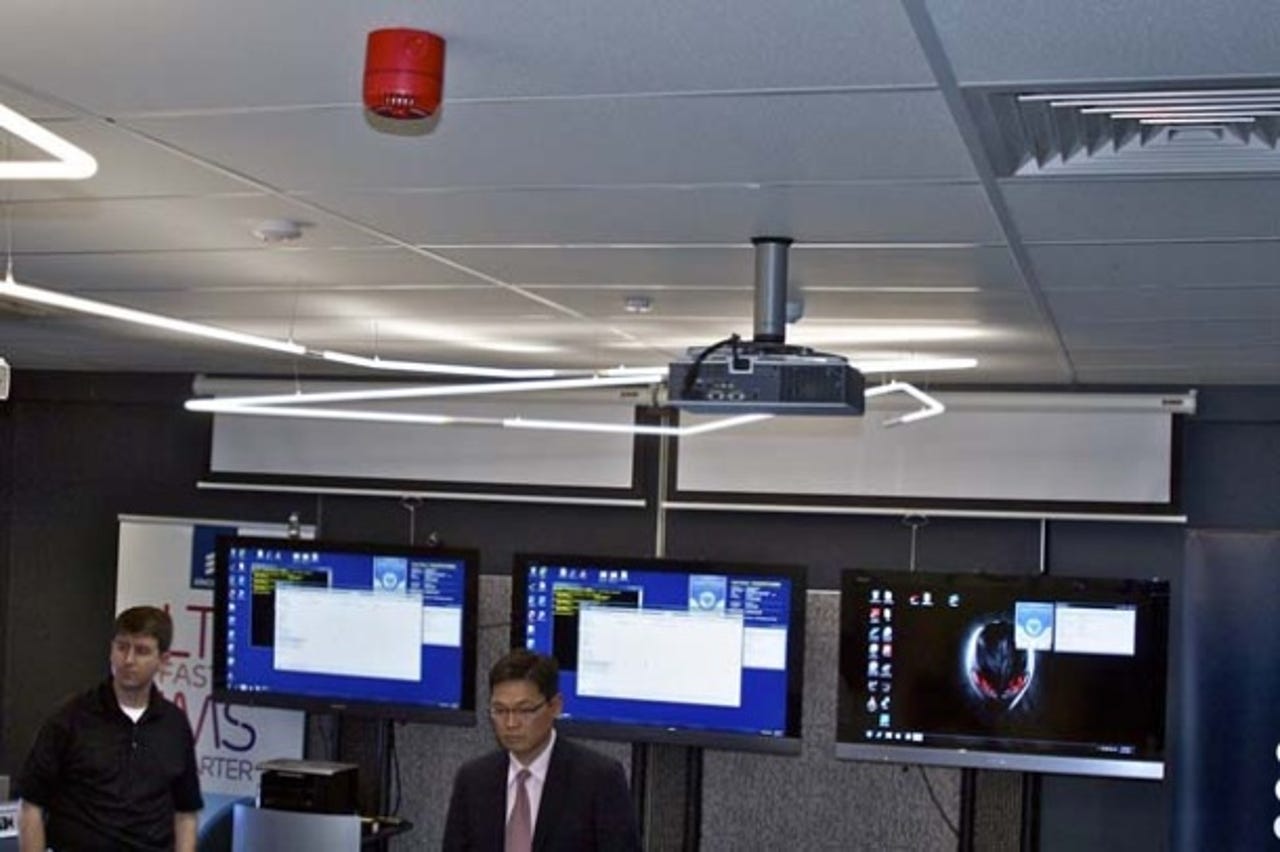Ericsson shows off future 4G tech


Ericsson is one of a swathe of vendors conducting trials for the next generation of mobile technology — long-term evolution (LTE).
Tucked into a conference room in an unassuming Port Melbourne office block is Ericsson's LTE Global Competence Centre. The centre includes a full installation of the same gear Ericsson has used in commercial deployments with TeliaSonera (in Sweden and Norway), MetroPCS, AT&T and Verizon, in a high-security equipment room somewhere on the premises. The gear has a small transmitter operating at very low power (limited by a government-granted scientific licence) providing LTE services around the room over 2.6GHz radio-frequency spectrum.
LTE has received a commitment from 101 operators in 41 countries, with 22 networks in service by the end of this year and up to 50 expected by the end of 2012. This map shows coverage and third-party audited performance figures for the LTE network around Stockholm.
Among other interesting TeliaSonera statistics: 90 percent of LTE users came from 3G services; 65 percent use LTE as a complement to fixed broadband rather than a replacement for it; and 54 percent would never go back to 3G. LTE access has also changed usage patterns: 26 percent said they were working with more mobility, 23 percent said they were downloading larger files than on 3G, 19 percent were watching web TV and movies, and 16 percent were surfing the web more since they adopted LTE.
The first demonstration application is streaming video. The app showed four different versions of the demo clip streaming over the LTE connection — encoded at bitrates of 512Kbps, 1Mbps, 2Mbps and 4Mbps. Speeds of 2Mbps are good enough for commercial video services and 4Mbps represents a top-end offering that would be overkill for many markets, according to Mark Murphy, Ericsson's head of innovation in North America.
Video streamed smoothly over LTE at all bitrates and was extremely watchable on the high-resolution flat-screen monitors. Note the meters in the bottom right-hand corner, which show historical bandwidth usage and latency figures.
The second demonstration is a mobile healthcare system, in which location services and the network's IMS (IP Multimedia Subsystem) capabilities are used to establish connections and manage a variety of communications sessions between a central dispatcher and an LTE-enabled device in the field.
A close-up of the Samsung 4G USB modem used in the demonstration facility.
This handheld, Windows 7-based computer has been connected using a Samsung USB dongle and can be tracked and connected to by the dispatcher. In the demonstration scenario, emergency medicine crews would carry such a unit in their vehicles, connecting with the dispatcher via LTE.
If a patient requests help, the dispatcher can identify which emergency staff are in the area (notated with the yellow square) and feed them information about the incident while the emergency crew is on its way. This can not only improve diagnosis, but save valuable time and facilitate communications with support staff. For example, a doctor can provide treatment advice via live video-conferencing and can share x-rays and other images.
The fourth demonstration application involves e-learning: here, the teacher (Murphy, off-screen) is giving an interactive video lesson about koalas that is being broadcast to wirelessly connected computers of students (in this case, Ericsson strategic marketing manager Warren Chaisatien).
Here, Murphy demonstrates the use of LTE to support live news gathering. One or more cameras can be set up in the field, then wirelessly connected to — and controlled from — the broadcast centre, where studio technicians can monitor and control multiple cameras. Strong connectivity and ease of control would allow one-man news teams to cover complex events with minimal on-the-ground assistance.
Again, location and IMS capabilities could be used to find the nearest crew to a breaking news story, then assign jobs directly to their wirelessly connected terminals.